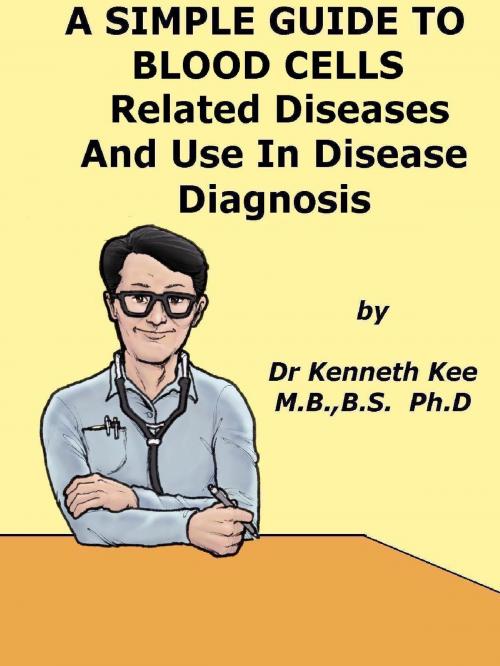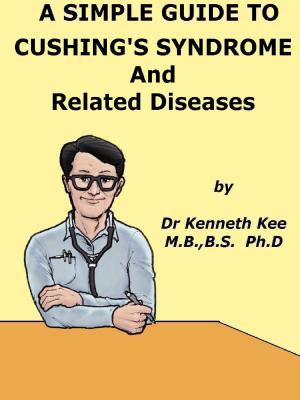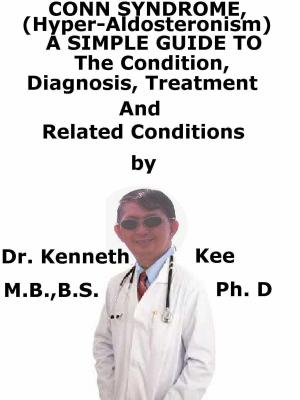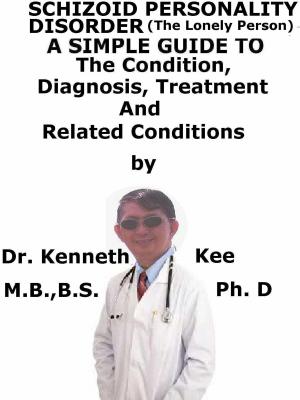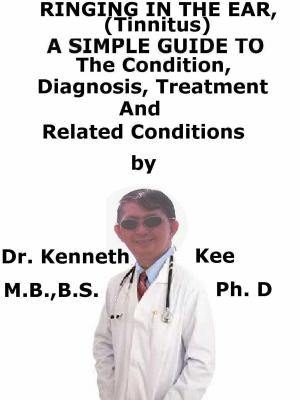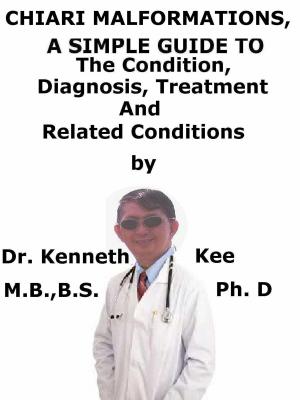A Simple Guide to the Blood Cells, Related Diseases And Use in Disease Diagnosis
Nonfiction, Health & Well Being, Medical, Specialties, Internal Medicine, Hematology, Patient Care, Diagnosis| Author: | Kenneth Kee | ISBN: | 9781301830503 |
| Publisher: | Kenneth Kee | Publication: | June 1, 2013 |
| Imprint: | Smashwords Edition | Language: | English |
| Author: | Kenneth Kee |
| ISBN: | 9781301830503 |
| Publisher: | Kenneth Kee |
| Publication: | June 1, 2013 |
| Imprint: | Smashwords Edition |
| Language: | English |
The Blood Cells
What are Blood Cells?
Blood cells are cells produced by hematopoiesis (the process of blood production) in the bone marrow and make up 45% of the blood in a human body.
What are the Types of Blood Cells?
In the human body there are 3 types of blood cells:
-
Red blood cells – Erythrocytes
-
White blood cells – Leukocytes
-
Platelets– Thrombocytes.
They are suspended in a slightly alkaline liquid called the plasma which forms the remaining 55% of the blood volume.
The plasma contains 90% water and 9% proteins with remainder being:
-
Glucose
-
Antibodies
-
Hormones
-
Enzymes
-
Vitamins
-
Mineral salts
-
Lipids
-
Gases
In an adult person, the blood is about 1/12th of the body weight and this means 5-6 liters.
What are the functions of the blood cells?
The blood cell has important functions:
-
It brings oxygen from the lungs to the tissues and collects the carbon dioxide (CO2) back to the lungs.
-
It also carries nutritive substances such as proteins, glucose and minerals to the tissues and gathers the excreted material which will be filtered through the kidneys.
The blood also carries hormones, enzymes and vitamins.
- It protects the body by mean of the antibacterial activity of the leukocytes, the bactericidal power of the serum and the immune response of which the lymphocytes are the protagonists.
What are the features of different Blood Cells?
In the blood are present special cells, classified in:
-
Red Blood cells or erythrocytes
-
White Blood Cells or leukocytes.
-
Platelets or thrombocytes
Erythrocytes (red cells)
The erythrocytes are the most numerous blood cells i.e. about 4-6 millions/mm3.
They are also called red cells.
In man erythrocytes are devoid of a nucleus and have the shape of a biconcave lens.
The red cells are rich in hemoglobin, a protein able to bind in a faint manner to oxygen.
These cells are responsible for providing oxygen to tissues and partly for recovering carbon dioxide produced as waste.
However, most CO2 is carried by plasma, in the form of soluble carbonates
The lack of nucleus allows more room for hemoglobin and the biconcave shape of these cells raises the surface and cytoplasmic (cell to plasma) volume ratio.
These characteristics make more efficient the diffusion of oxygen by these cells.
In so-called "sickle-cell Anemia", erythrocytes become typically sickle-shaped.
Red cells can have different shapes:
- normal (discocyte),
- berry (crenated),
- burr (echinocyte),
- target (codocyte),
- oat,
- sickled,
- helmet,
- pinched,
- pointed,
- indented,
The mean life of erythrocytes is about 120 days.
When they come to the end of their life, they are retained by the spleen where they are phagocyted by macrophages.
Leukocytes (white cells)
Leukocytes, or white cells, are responsible for the defense of the organism.
In the blood, they are much less numerous than red cells.
The density of the leukocytes in the blood is 5000-7000 /mm3.
Leukocytes divide in two categories:
- granulocytes
The term granulocyte is due to the presence of granules in the cytoplasm of these cells.
In the different types of granulocytes, the granules are different.
Granulocytes distinguish themselves in neutrophil, eosinophil and basophil.
- lymphoid cells or agranulocytes.
The lymphoid cells, instead, distinguish themselves in lymphocytes and monocytes.
Each type of leukocyte is present in the blood in different proportions:
a. neutrophil 50 - 70 %
b. eosinophil 2 - 4 %
c. basophil 0.5 - 1 %
d. lymphocyte 20 - 40 %
e. monocyte 3 - 8 %
TABLE OF CONTENT
Chapter 1 The Blood Cells
Chapter 2 Blood Cells in Disease Diagnosis
Chapter 3 Anemia
Chapter 4 Aplastic Anemia
Chapter 5 G6PD Deficiency
Chapter 6 Thalassemia
Chapter 7 Blood Cancers -Leukemia
Chapter 8 Lymphoma
Chapter 9 Multiple Myeloma
Chapter 10 Thrombocytopenia
Chapter 11 Hemophilia
Epilogue
The Blood Cells
What are Blood Cells?
Blood cells are cells produced by hematopoiesis (the process of blood production) in the bone marrow and make up 45% of the blood in a human body.
What are the Types of Blood Cells?
In the human body there are 3 types of blood cells:
-
Red blood cells – Erythrocytes
-
White blood cells – Leukocytes
-
Platelets– Thrombocytes.
They are suspended in a slightly alkaline liquid called the plasma which forms the remaining 55% of the blood volume.
The plasma contains 90% water and 9% proteins with remainder being:
-
Glucose
-
Antibodies
-
Hormones
-
Enzymes
-
Vitamins
-
Mineral salts
-
Lipids
-
Gases
In an adult person, the blood is about 1/12th of the body weight and this means 5-6 liters.
What are the functions of the blood cells?
The blood cell has important functions:
-
It brings oxygen from the lungs to the tissues and collects the carbon dioxide (CO2) back to the lungs.
-
It also carries nutritive substances such as proteins, glucose and minerals to the tissues and gathers the excreted material which will be filtered through the kidneys.
The blood also carries hormones, enzymes and vitamins.
- It protects the body by mean of the antibacterial activity of the leukocytes, the bactericidal power of the serum and the immune response of which the lymphocytes are the protagonists.
What are the features of different Blood Cells?
In the blood are present special cells, classified in:
-
Red Blood cells or erythrocytes
-
White Blood Cells or leukocytes.
-
Platelets or thrombocytes
Erythrocytes (red cells)
The erythrocytes are the most numerous blood cells i.e. about 4-6 millions/mm3.
They are also called red cells.
In man erythrocytes are devoid of a nucleus and have the shape of a biconcave lens.
The red cells are rich in hemoglobin, a protein able to bind in a faint manner to oxygen.
These cells are responsible for providing oxygen to tissues and partly for recovering carbon dioxide produced as waste.
However, most CO2 is carried by plasma, in the form of soluble carbonates
The lack of nucleus allows more room for hemoglobin and the biconcave shape of these cells raises the surface and cytoplasmic (cell to plasma) volume ratio.
These characteristics make more efficient the diffusion of oxygen by these cells.
In so-called "sickle-cell Anemia", erythrocytes become typically sickle-shaped.
Red cells can have different shapes:
- normal (discocyte),
- berry (crenated),
- burr (echinocyte),
- target (codocyte),
- oat,
- sickled,
- helmet,
- pinched,
- pointed,
- indented,
The mean life of erythrocytes is about 120 days.
When they come to the end of their life, they are retained by the spleen where they are phagocyted by macrophages.
Leukocytes (white cells)
Leukocytes, or white cells, are responsible for the defense of the organism.
In the blood, they are much less numerous than red cells.
The density of the leukocytes in the blood is 5000-7000 /mm3.
Leukocytes divide in two categories:
- granulocytes
The term granulocyte is due to the presence of granules in the cytoplasm of these cells.
In the different types of granulocytes, the granules are different.
Granulocytes distinguish themselves in neutrophil, eosinophil and basophil.
- lymphoid cells or agranulocytes.
The lymphoid cells, instead, distinguish themselves in lymphocytes and monocytes.
Each type of leukocyte is present in the blood in different proportions:
a. neutrophil 50 - 70 %
b. eosinophil 2 - 4 %
c. basophil 0.5 - 1 %
d. lymphocyte 20 - 40 %
e. monocyte 3 - 8 %
TABLE OF CONTENT
Chapter 1 The Blood Cells
Chapter 2 Blood Cells in Disease Diagnosis
Chapter 3 Anemia
Chapter 4 Aplastic Anemia
Chapter 5 G6PD Deficiency
Chapter 6 Thalassemia
Chapter 7 Blood Cancers -Leukemia
Chapter 8 Lymphoma
Chapter 9 Multiple Myeloma
Chapter 10 Thrombocytopenia
Chapter 11 Hemophilia
Epilogue
